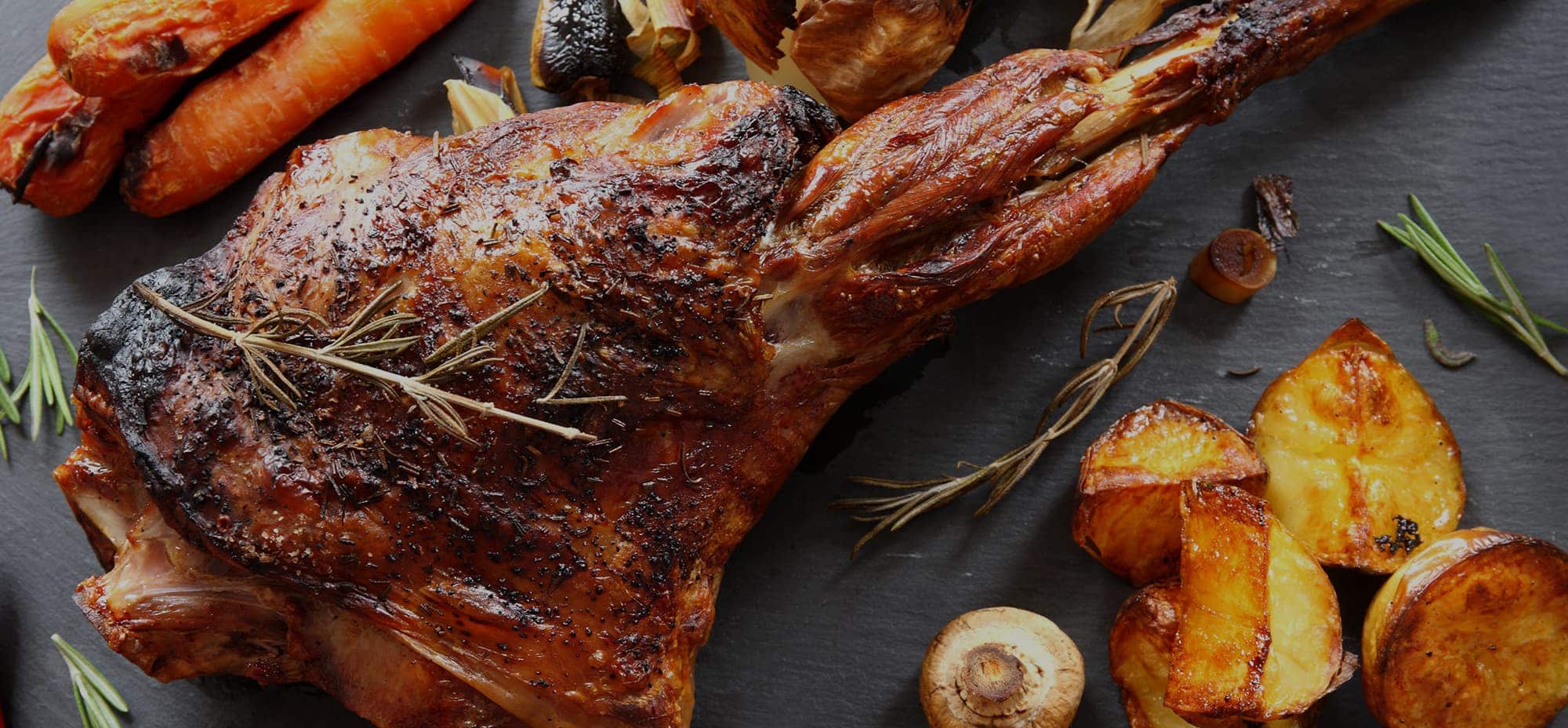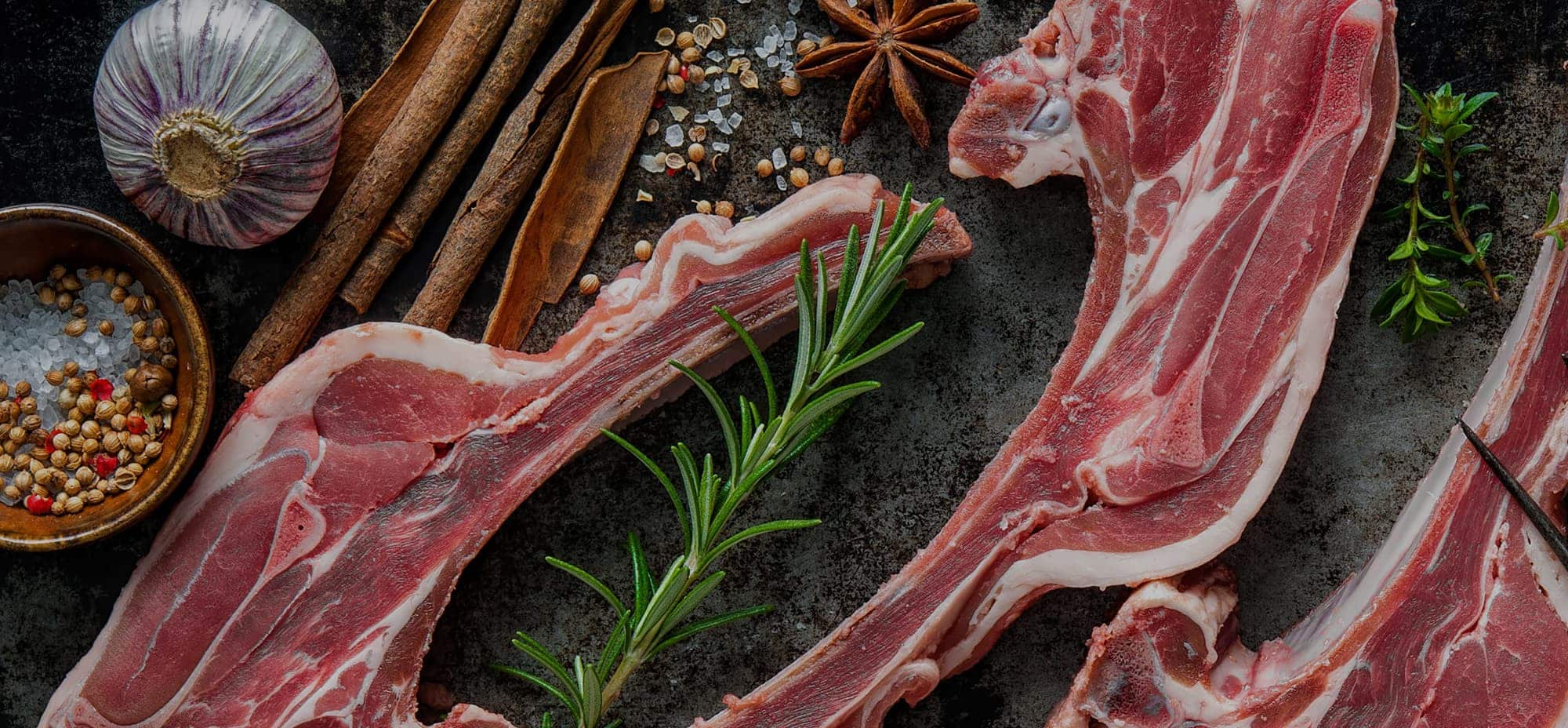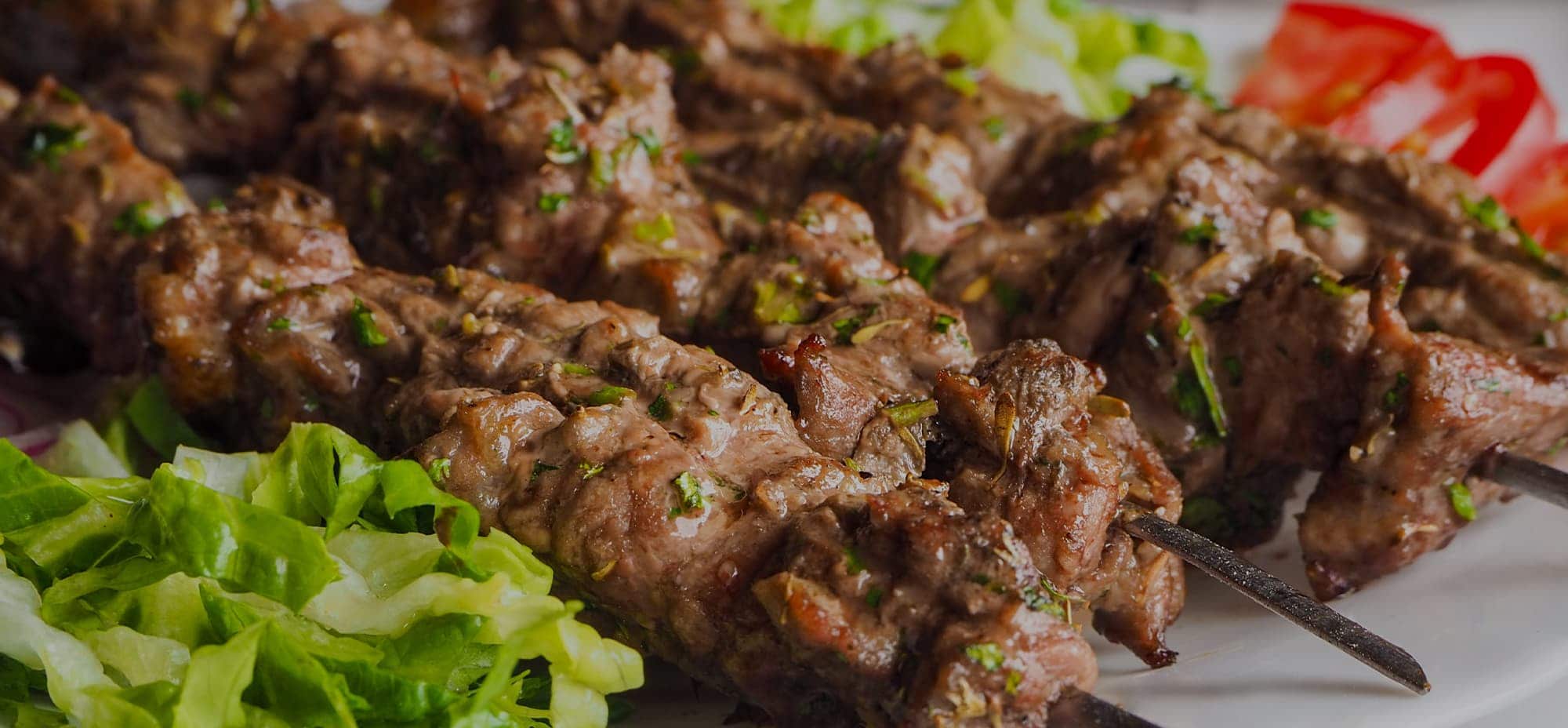We love our lamb – that’s no secret. What’s more quintessentially Aussie than a juicy lamb chop? Australia’s love of lamb has been shared with the rest of the world for decades for its buttery flavour and delicate texture, whether it’s sliced medium-rare for a light salad, slow-cooked in a Massaman curry or sous vide for a butter-soft backstrap. It's a favourite on Australian menus, but it hasn't always been that way.
Superior Food Services spoke to Mary-Jane Morse from popular foodservice trade magazine Rare Medium (with Meat & Livestock Australia) about Australia’s late love of lamb and the foodservice industry’s responsibility to making lamb consumption more sustainable country-wide.
Why is lamb a late favourite?

Only in the last 20 years has lamb really taken pride of place at the top of menus. Perhaps it was when Naomi Watts turned down a date with Tom Cruise in that famous Lambassador commercial when Aussies really started to take lamb seriously. The slogan for the television commercial was, "Nothing comes before a roast lamb dinner.” At the time advertising experts believed the ad was too far-fetched for the average Australian to relate to – when it came to eating lamb, consumers just didn't really care for it. Perhaps it was a few years after that famous commercial when local commentating legend Sam Kekovich dubbed the famous line in 2005: “Its tradition. Don’t be un-Australian. Serve lamb on Australia Day. You know it makes sense.”
Many social commentators believe the drive to eat more lamb came from the excess production of sheep’s wool for export, notably to China and Turkey. But the question that may never be answered is; did our love of lamb derive from necessity or was it born from patriotism? Perhaps we’ll never know. For whatever reason, Australia’s unofficial snubbing of lamb drifted away in those years.
How much lamb is sold and consumed in Australia today?

When it comes to eating lamb, today is a different story. Research from Meat & Livestock Australia notes that from 2017-18, “Australia produced almost 532,000 tonnes carcase weight (cwt) of lamb and 204,000 tonnes cwt of mutton (ABS)”. In addition to this, Australian consumers and the hospitality industry are spending $2.2 billion a year on lamb and $47 million on mutton. To put this into perspective, that’s 8.8 kilograms consumed by each Aussie a year.
The effects of the latest drought:
Australia is in the midst of one of the worst droughts in the country's history, which has had an enormous impact on local farmers ability to breed and grow the stock of sheep's meat. “The recent drought has without a doubt, had an impact on how chefs source their lamb produce,” Says Mary-Jane. “Consumption is on the rise, but accessibility is rapidly declining. Chefs have to think creatively with how they not only source product but also how they use it, how they prepare it, what they throw away, and what they use."
Despite crippling drought conditions only worsening for our local farmers, the latest State of the Industry Report for 2019 from the Red Meat Advisory Council notes that Australia is still the world’s largest exporter of lamb and mutton.
Key drought facts:
- Extreme flooding in far north Queensland in February of this year saw significant sheep stock and infrastructure loss. Producers are expected to feel the effects of the loss and damage for several years, as they endeavour to pick up the pieces both literally and financially.
- Much of the east coast of Australia received a significant decrease in rainfall in 2018 and early 2019, forcing many sheep producers to deactivate production altogether. However, levels in 2018 were higher than the five-year average.
- As of 2018, lamb slaughter increased by 1% year-on-year and up 1% on the five-year average. Sheep slaughter was up 26% year-on-year and up 12% on the five-year average," according to the Australian Bureau of Statistics data.
As the global population is predicted to grow to 10 billion by 2050, the report also found there’s been a rise in alternative protein demand. "The demand for protein is growing significantly, and traditional production will need to be supplemented by non-animal-based sources,” it states. This growing demand for lamb is offset slightly by many consumers choosing vegetarian or vegan diets that match their beliefs in sustainability, the environment, health and taste.
The report says that “while it is difficult to gauge the full impact of the drought on the industry, they have certainly affected prices and supply." Lamb and sheep products were sold at record price heights from 2018-19 due to supply shortages. Natural disasters such as flooding and extreme drought conditions have also led to the national sheep flock to decline 6.8% (just under 66 million sheep).
What does this mean for lamb supply in the food service industry? Despite worsening drought conditions, Australians still evidently want to eat lamb. But, with lamb prices at record heights, restaurants are being urged to think creatively when it comes to serving lamb on their menus. It's the responsibility of food service providers to not only take a new approach to how they serve lamb products for sustainability purposes but also for their bottom line.
The hospitality industry's responsibility for the development of lamb consumption

Food service outlets have, and always have had, a stronghold on consumer trends and preferences, particularly with the rise of online social platforms in recent years. With this responsibility, venues are expected to encourage and support the development of lamb products across their menus and not just for conventional cuts.
"Today we see a shift in food service back to more agile techniques," says Mary-Jane. "Chefs are using cuts that may not necessarily be the most convenient, but they're starting to appreciate the importance and benefit of sustainability in Australian agriculture." This movement isn't left field; customers have become more educated in recent years into the origin of the food they consume. “They want to know the history of the produce, not just from which supplier, but throughout the entire supply chain.”
The Masterpieces Program
The Masterpieces Program, an initiative by Meat & Livestock Australia, was developed to "position non-loin cuts of meat as fashionable and versatile ingredients that allow a chef to showcase their skills and improve plate costs." In other words, they encourage chefs to use every part of the animal, not just the favoured and more expensive cuts like lamb rack and backstrap. As a result of this initiative, we see the Masterpieces trend take over the country. Restaurants are stewing rump, using forequarter as mince in lamb sausages and slow-braising lamb loin. Highly regarded Sydney restaurant Café Sydney serves up a delicious pressed lamb rump and shoulder dish while Chiswick's casual fine dining restaurant, famed for their farm-to-table philosophy, use forequarter as a base for many of their in-depth and flavoursome sauces and jus'.
“This movement really represents what some of the most prominent chefs are doing today,” says Mary-Jane. “Many are using their advanced skillset and creative background not just to pay tribute to the lamb cut they’re using, but to do it in a completely new and unique way. Restaurants, pubs and bars are now starting a conversation with the consumer by plating these cuts – there are no secrets anymore,” says Mary-Jane. “Chefs have become proud to showcase their unique lamb dishes and it’s creating a demand for less convenient lamb cuts, which, in an effort improve our sustainability, can only be a good thing.”
(For more information on how to use sustainable meat products in your kitchen, check out an earlier article here.)
Rare Medium
The trade department for Meat & Livestock Australia has consistently supported the use and development of lamb products in the domestic hospitality industry. This drive is further evident in the MLA’s trade magazine Rare Medium, which is an online publication that showcases the best of Australian meat products, particularly lamb and beef.
In Rare Medium, Peter Cooksley from The Town Mouse talks about how rising food costs and operational overheads are making chef’s lives a constant challenge. And because of this, food service operators are “changing the way [they] think about lamb – exploring different cuts, experimenting with techniques old and new and considering seasonality of accompanying flavours.”
The publication presented his team with a challenge; to curate a lamb dish for under $10 using a cut from a lamb leg (one of the least used cuts of lamb in the food service industry). What Chef Cooksley’s team came up with was deliciously enticing; poached lamb silverside with chicory and capers and another lamb rump dish with charred zucchini and olives. What this experiment proved was that food service outlets don't need to spend big money on lamb rack and shoulder to impress their customers.
“In foodservice today, the bottom line is the most important factor for the business,” says Mary-Jane. “We’re seeing cheaper cuts being used in both cooking technique and also in procurement more and more." What this experiment proved was that foodservice outlets don't need to spend big money on lamb rack and shoulder to impress their customers”. Cheaper cuts are more accessible now than ever before and, if treated properly, can provide just as much flavour in dishes as conventional cuts.
Conclusion: When working in the world of hospitality, it’s vital to keep your finger on the pulse when it comes to serving lamb dishes on the menu. Our everlasting love of lamb will never die, but how it's treated in the food service industry will continue to evolve throughout the years.
As part of the Superior Food Services business, we’ve partnered with Australian meat experts, Global Meats. Check out their range of products today. Want to know more about what’s happening in the fresh produce sector? Check out our November Market Update here.